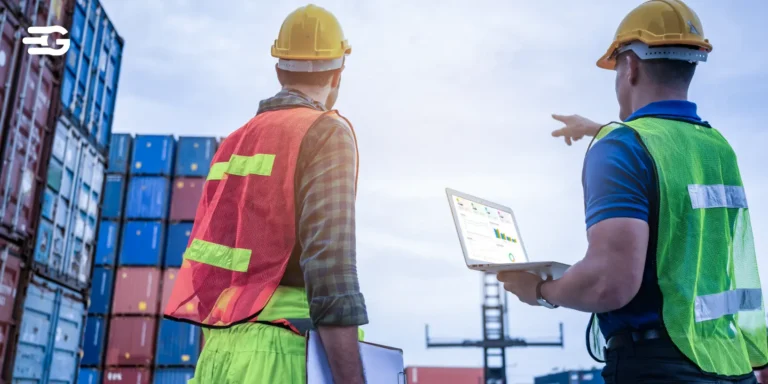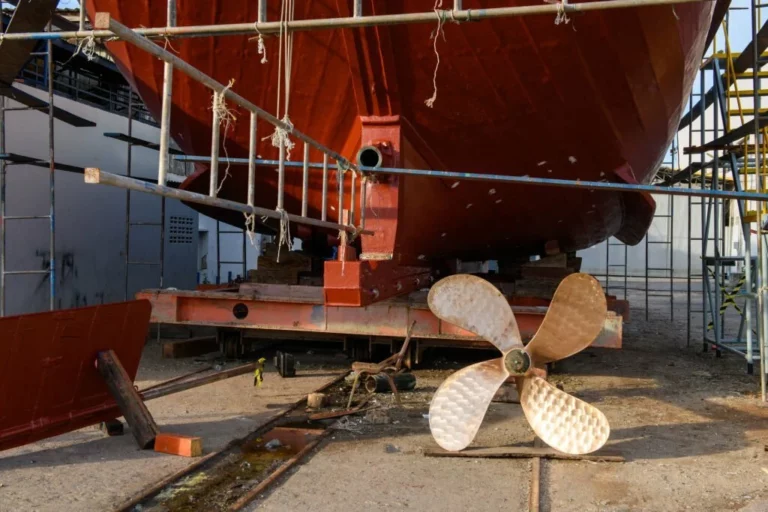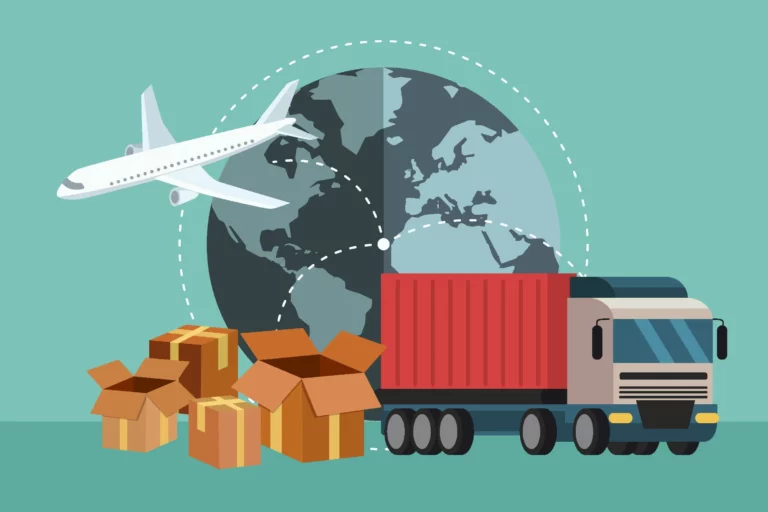What Does In Transit Mean in Logistics?
In logistics, “in transit” refers to the active movement of goods from one point to another. It’s the stage when shipments are between departure and arrival, often crossing multiple facilities and transport modes. Understanding this term is crucial for businesses handling shipments, as it impacts how you track, manage, and deliver products to customers.
The Importance of Tracking Goods In Transit
Tracking goods in transit is essential for businesses to ensure smooth logistics operations. It offers real-time visibility that can significantly improve efficiency, customer satisfaction, and overall supply chain performance. Here’s why it’s so important:
- Improved Customer Satisfaction: Provides accurate updates on shipment location and expected delivery time, reducing customer frustration and building trust.
- Optimized Inventory Management: Real-time tracking helps prevent overstocking or understocking by allowing businesses to plan inventory levels accurately.
- Risk Reduction: Continuous monitoring helps detect theft or damage during transit, enabling quick responses to prevent loss and ensuring timely deliveries.
- Enhanced Operational Efficiency: Access to real-time data allows businesses to make better decisions regarding routing, delays, and potential disruptions, saving time and resources.
- Better Communication: Accurate tracking enables proactive communication with customers about potential delays, managing expectations and fostering loyalty.
- Cost Reduction: Reduces unnecessary costs, such as warehousing, by providing clear insights into when goods will arrive, allowing better planning and resource allocation.
Real-time tracking offers businesses greater control over their shipments, leading to more efficient logistics management and higher customer satisfaction.
Challenges of Tracking In-Transit Shipments
Tracking in-transit shipments presents several challenges, which can significantly impact the efficiency and reliability of logistics operations. Here are the key obstacles businesses face:
Fragmented Data Across Systems
Many businesses use multiple systems for managing different stages of the supply chain. For instance, a supplier might use one platform for inventory management, while the carrier uses another for tracking shipments. This lack of integration can make it difficult to get a unified view of the shipment’s status. Without a centralized system, businesses are left piecing together information from different sources, which increases the risk of errors and miscommunication.
Outdated Tracking Information
Traditional tracking methods, such as manual logs or basic barcodes, often provide outdated or insufficient information. This gap in real-time data can create confusion for both businesses and customers. When businesses rely on these methods, they often fail to respond quickly to delays or disruptions. The lack of timely updates leads to reactive, rather than proactive, decision-making, which can result in missed opportunities to mitigate issues before they escalate.
Unpredictable Delays
External factors like weather conditions, political unrest, or border issues can cause delays that disrupt transit schedules. These are particularly challenging because they are often beyond a business’s control and difficult to predict. While tracking tools can show the current location of goods, they can’t always foresee or mitigate disruptions such as extreme weather or customs delays. Businesses need to account for these uncertainties and have contingency plans in place to minimize impact.
Also Read: Tackling Customs Clearance Delays in Global Trade
Lack of Visibility into Localized Delays
Even with general tracking capabilities, localized delays (like traffic congestion, port delays, or loading issues) often go unnoticed until they cause significant disruptions. Businesses may not have visibility into smaller disruptions that don’t trigger major alerts but still affect delivery timelines.
To overcome these challenges, businesses need an integrated system that provides real-time visibility and predictive analytics. This helps identify potential issues early, plan alternatives, and reduce delays. Ensuring consistent and accurate data flow between all stakeholders is also crucial to maintaining a smooth supply chain operation.
How GoComet Enhances In-Transit Visibility
GoComet has revolutionized how businesses track in-transit shipments. With its real-time tracking features, you can follow the exact location of your goods. GPS-enabled devices send updates, and interactive dashboards make the data easy to read and act on.
Alerts notify you of any delays or issues, allowing you to quickly adjust plans. The system’s ability to provide accurate, up-to-date information means fewer surprises and better decision-making. In my experience, using a tool like GoComet’s tracking system saves time and resources, preventing costly mistakes.
Benefits of Real-Time Tracking
Real-time tracking brings several key benefits that enhance the efficiency and reliability of logistics operations. Here’s why it’s a game-changer for businesses:
Unmatched Transparency
Real-time tracking provides end-to-end visibility of your shipments, allowing you to track their exact location and status at any given time. This level of transparency ensures that businesses can make informed decisions quickly, without relying on outdated or incomplete data. With accurate, up-to-date information, companies can address issues before they escalate, ensuring smoother operations.
Cost Savings
By identifying delays and potential disruptions early, businesses can take proactive measures to prevent additional costs. For example, avoiding missed deliveries or preventing goods from sitting idle in storage can significantly reduce unnecessary storage fees.
Moreover, real-time tracking helps identify theft or damage quickly, allowing businesses to take corrective actions before these issues lead to more significant financial losses. Tracking shipments effectively can also reduce costs associated with last-minute rush shipments, which are often more expensive.
Improved Customer Relationships
One of the most noticeable benefits of real-time tracking is its impact on customer satisfaction. By providing accurate, timely updates on the status of shipments, businesses can reduce customer uncertainty.
When customers are informed about potential delays or changes in delivery times, they’re less likely to become frustrated. This transparency builds trust and leads to stronger customer loyalty, as businesses show that they are reliable and responsive.
Better Resource Allocation
With real-time data, businesses can better allocate resources and optimize operations. For instance, knowing when goods will arrive allows warehouses to prepare in advance, reducing wait times and improving efficiency in unloading and storage.
Similarly, if a shipment is delayed, businesses can quickly adjust the supply chain, reallocate resources, or even reroute shipments to avoid costly bottlenecks.
Enhanced Decision-Making
Real-time tracking gives businesses the ability to make data-driven decisions. From optimizing routes and schedules to managing inventory more efficiently, having access to accurate tracking data allows companies to plan ahead and respond to issues faster. In turn, this helps companies improve their overall logistics performance and maintain competitive advantage.
Real-time tracking is no longer a luxury; it’s an essential tool for businesses that want to stay competitive, reduce costs, and provide exceptional customer service. By offering full visibility into shipments, it improves operations, reduces risk, and builds stronger relationships with customers.
Case Studies
To demonstrate the real-world impact of real-time tracking and supply chain visibility, here are two case studies highlighting businesses that successfully overcame logistics challenges. By leveraging advanced tracking technology, these companies were able to improve operational efficiency, reduce costs, and enhance customer satisfaction.
Case Study 1: Kelmer
Introduction:
Kelmer, a global logistics procurement company, was struggling with outdated tracking methods that hindered their operational efficiency. Their manual tracking system was causing delays, customer dissatisfaction, and a significant increase in support inquiries. The company needed a solution to improve visibility and streamline their logistics operations.
Challenges:
Kelmer’s reliance on manual tracking was inefficient and prone to errors. Without real-time updates, the company faced delays and poor communication with customers, leading to frustration and increased customer support inquiries. The lack of visibility into shipments impacted their ability to anticipate issues, and their customer satisfaction levels were declining rapidly.
Impact:
The inefficiencies of the manual tracking system resulted in a 70% increase in the time spent tracking shipments, which added operational overhead. Customers were left in the dark about their shipments’ status, leading to an 80% rise in support inquiries. This poor communication and lack of transparency damaged brand loyalty and negatively affected the company’s reputation.
Solution:
Kelmer turned to GoComet’s real-time tracking system to address these issues. The system provided automated tracking updates, offering complete visibility of shipments in real time. The shift to GoComet reduced manual effort by 70%, and the 80% decrease in customer support inquiries proved the system’s efficiency. By offering transparent tracking, Kelmer improved customer satisfaction and operational efficiency, ultimately strengthening its market position.
Case Study 2: Kodak
Introduction:
Kodak, a multinational technology giant, faced logistical inefficiencies due to their reliance on outdated tracking processes. With shipments crossing international borders, the lack of real-time visibility and automated data led to delays, higher costs, and ineffective decision-making. Kodak sought a solution to streamline its global operations.
Challenges:
Kodak relied heavily on manual logs and self-reported data from carriers, which led to inconsistent tracking information. Without real-time visibility, the company struggled to respond quickly to delays or disruptions, causing unnecessary operational bottlenecks. The lack of an efficient system to track shipments increased costs and slowed down decision-making, hurting Kodak’s supply chain efficiency.
Impact:
The absence of real-time tracking led to several operational inefficiencies, including delays in shipments and higher operational costs due to missed deadlines and manual intervention. The lack of visibility also caused communication gaps and hindered Kodak’s ability to react to changes or disruptions in the supply chain.
Solution
Kodak adopted GoComet’s real-time tracking system, which provided comprehensive visibility into shipments and enabled AI-driven insights for better decision-making. The automated tracking updates reduced delays, while the system’s predictive analytics helped Kodak foresee potential disruptions and optimize routes. This transition resulted in significant time and cost savings, improved operational efficiency, and better communication across teams, allowing Kodak to better manage their global supply chain.
The Future of In-Transit Visibility
To stay competitive in logistics, embracing advanced technologies is essential. These technologies enable businesses to improve efficiency, enhance visibility, and manage in-transit shipments with greater accuracy and reliability. Here are some key technologies shaping the future of supply chain management:
AI-Powered Predictive Analytics:
Artificial Intelligence (AI) can analyze historical data, track patterns, and predict potential disruptions or delays in the shipment process. AI algorithms identify trends in shipping lanes, weather conditions, and customs processes to suggest optimal routes or alternative delivery schedules.
It allows businesses to proactively adjust their logistics plans, preventing costly delays and ensuring timely deliveries. Predictive analytics empowers businesses to make decisions before problems arise, saving time and reducing risks.
IoT Sensors for Real-Time Data
The Internet of Things (IoT) has revolutionized supply chains by integrating sensors into shipments, vehicles, and containers. These sensors collect real-time data on conditions such as temperature, humidity, and even vibrations or shocks during transit. This is particularly crucial for sensitive goods like perishable items or pharmaceuticals.
With IoT technology, businesses can track the condition of their products, ensuring they arrive in optimal condition. Additionally, IoT devices help pinpoint where disruptions may occur, allowing for quick corrective actions to minimize delays and damage.
Blockchain for Secure Tracking
Blockchain technology is gaining traction in supply chain management due to its ability to provide an immutable and transparent ledger of transactions. By recording every step of the shipment process, from origin to delivery on a decentralized blockchain, businesses can track the exact history of a product.
This increases trust and transparency in the supply chain, especially in industries where product authenticity is critical. Blockchain also helps prevent fraud, reduce errors, and ensure the integrity of the shipment data.
By integrating these technologies, businesses can create a smarter, more efficient supply chain. AI, IoT, and blockchain combined allow for better decision-making and provide an unprecedented level of visibility into in-transit shipments. With data-driven insights, companies can optimize routes, reduce costs, mitigate risks, and enhance customer satisfaction.
These technologies not only help businesses address current challenges but also position them to meet future demands in the logistics industry. The ability to track shipments in real time, predict delays, and securely share data provides a competitive edge, streamlining operations and fostering stronger, more efficient supply chains.
Conclusion
Managing in-transit shipments effectively can make or break your logistics operations. By adopting real-time tracking systems like GoComet’s, you gain better visibility, reduce costs, and enhance customer satisfaction. The tools are there—it’s time to make them work for you.
Are you ready to take control of your in-transit shipments and unlock the power of real-time visibility? Click here to visit GoComet and discover our comprehensive solutions for your business.






